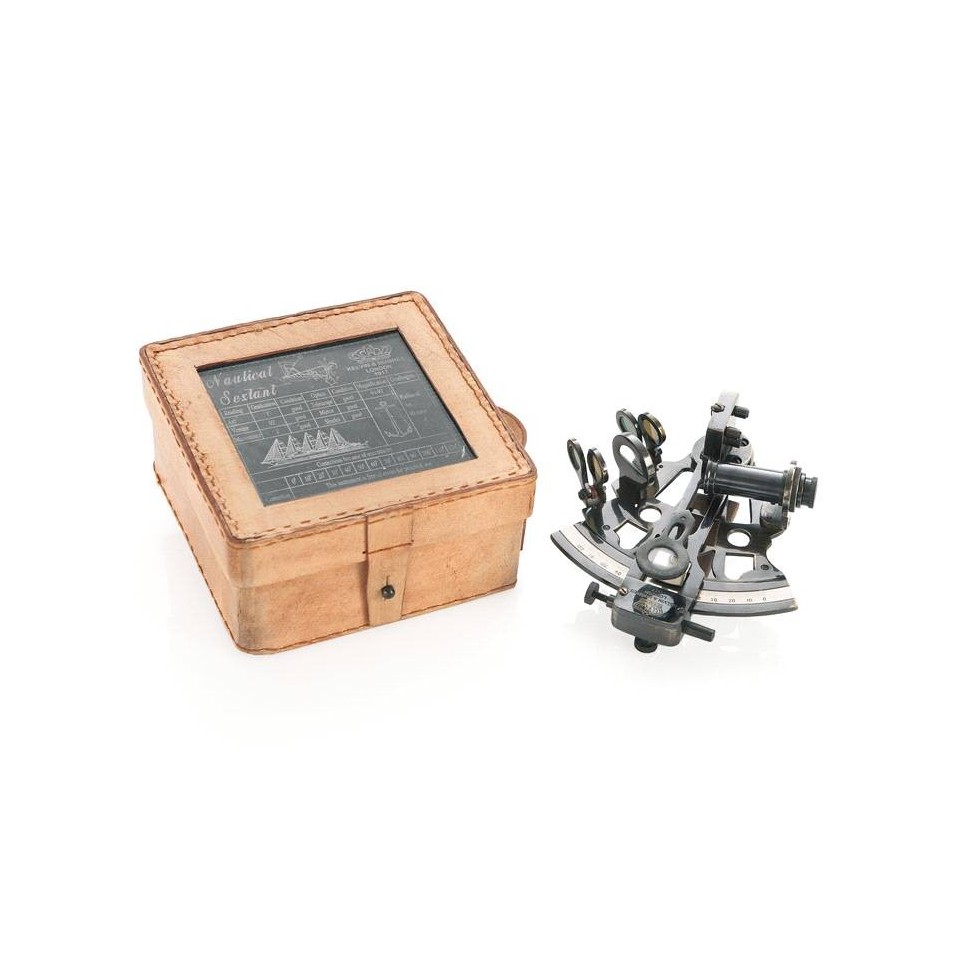

| Los pedidos realizados el día 25 de Julio, se procesarán el día 26 por fiesta local. |


Sextant in old brass with a leather case and screen-printed glass lid.
Sextant in old brass with a leather case and screen-printed glass lid.
The sextant was designed for sea navigation. It allows to obtain the angular height of the sun over the horizon. It was invented in the 1730s by two people: John Hadley (1682-1744), English mathematician, and Thomas Godfrey (1704-1749), an American inventor. He quickly replaced the astrolabe and octant as the main instrument for navigation. The sextant consists of a small telescope, to look at the horizon, two mirrors (which reflect the image of the object), filters (for the sun), a movable arm and a graduated circle arc. The opening angle is 60º, one sixth of a circle, hence the name of the instrument.
Antiqued brass and acacia wood compass with dial. Decorative marine piece can be used as a paperweight.
IMEX Marine barometer, a great benchmark in quality measurement devices. This elegant IMEX Marine barometer analyses pressure variations allowing it to predict the weather. Clear acrylic frame. Made in Spain. 1 year warranty. 15x15x5 cm.
Ship's bell in brass with lanyard. In the past this essential instrument was used to organise life on board by regulating the duty watches. It was also used as an alarm bell in thick fog and to mark celebrations.
Brass porthole compass with wooden base.
IMEX Marine barometer, a great benchmark in quality measurement devices. This elegant IMEX Marine barometer analyses pressure variations allowing it to predict the weather. Made of brass. Made in Spain. Guaranteed 1 year. 11.5x3.5x11.5cm.
Original pendulum table clock in the shape of a beach hut. Give your home a touch of the coast with this exclusive clock. It is made of wood and handcrafted in Spain. A drawing of a marine fish is printed on the pendulum. This is a gift idea for those in love with the sea and the beach. It works with one AA battery (not included) that can be easily...